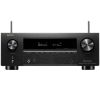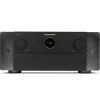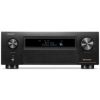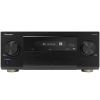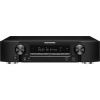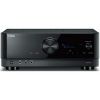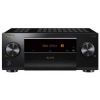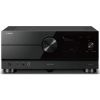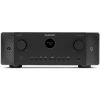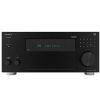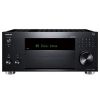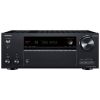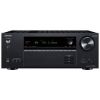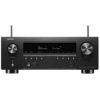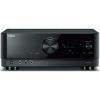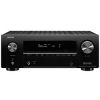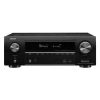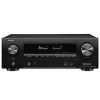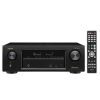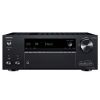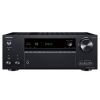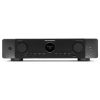Onkyo TX-RZ820 vs Onkyo TX-RZ730 review
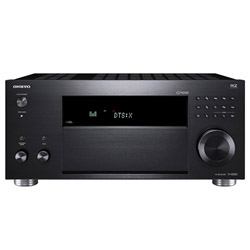
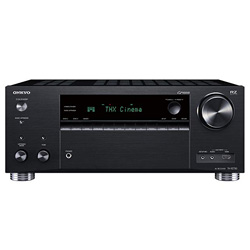
To get informed with the specs of the receivers, we suggest you read the Onkyo TX-RZ820 and Onkyo TX-RZ730 review. According to the results of our review, Onkyo TX-RZ820 received 7.7 points out of 10 possible, and Onkyo TX-RZ730 was rated 7.8 points. The release date of TX-RZ820 is 2017, and TX-RZ730 is 2018. This review shows us that the TX-RZ730 is a better choice as a home AV receiver than the TX-RZ820.
Main advantages Onkyo TX-RZ820 over Onkyo TX-RZ730
- ✔ We do not know advantages
Main advantages Onkyo TX-RZ730 over Onkyo TX-RZ820
- ✔More channels, namely 9, makes this receiver more profitable than its 7-channel competitor.
- ✔Both receivers have a multi-room zone function, but TX-RZ730 has 3 zones vs 2 on its competitor.
Amplifiers
For the built-in amplifier, the devices received different marks - 9 and 7, respectively, on a 10-point scale.
The number of channels is equal to the number of possible connected speakers. The Onkyo TX-RZ820 supports 7.2-channels sound, but Onkyo TX-RZ730 supports a 9.2-channels configuration.
RMS stands for the actual power of the receiver. The higher this value, the louder the sound can be produced.
| TX-RZ820 | TX-RZ730 | |
|---|---|---|
| Channels | 7.2 | 9.2 |
| Stereo power (RMS), W/Ohm | 160/8 | 175/6 |
| Output impedance, Ohm | 8 | 6 |
| Frequency response | 5Hz-100KHz | 5Hz-100KHz |
| THD in stereo, % | 0.08 | 0.08 |
Audio features
After reviewing the audio features of each model, we can rate the TX-RZ820 8 out of 10, and the TX-RZ730 - 9.
Most receivers now come with a microphone included. It is with the help of this microphone that the auto-calibration system functions, which adjusts the sound of the receiver to the room.
| TX-RZ820 | TX-RZ730 | |
|---|---|---|
| Digital to analog converter (DAC) | AK4458 384 KHz/32-bit | AK4458 384 KHz/32-bit |
| Bi-amping | ✔ | ✔ |
| Pure direct (straight) | ✔ | ✔ |
| Auto speaker calibration | AccuEQ | AccuEQ |
| Speaker A/B switching | ✖ | ✖ |
| Other audio features | has not | Advanced Music Optimizer, Theater-Dimensional, Hi-Res audio |
Connectivity
The connectivity of competitors in our comparison is equal and was rated 8 out of 10.
Bluetooth connection is now one of the main communication protocols for the receiver's control or even music broadcasting.
| TX-RZ820 | TX-RZ730 | |
|---|---|---|
| Wi-Fi | 2.4/5GHz | 2.4/5GHz |
| USB | 1 (USB 2.0) | 1 (USB 2.0) |
| Bluetooth | ✔ | ✔ |
| Ethernet (RJ45) | 1 | 1 |
| DLNA | ✖ | ✖ |
| MHL | ✖ | ✖ |
Streaming services
Now music streaming services are gaining more and more popularity. They allow users to listen to millions of songs by subscription.
| TX-RZ820 | TX-RZ730 | |
|---|---|---|
| Apple Music (AirPlay) | AirPlay | AirPlay |
| Amazon Music | ✖ | ✔ |
| Spotify | ✔ | ✔ |
| Other streaming services | Deezer, TIDAL | Deezer, TIDAL, TuneIn Radio |
Extensive connections
The presence of many connectors makes the receiver more versatile. But there are also narrowly targeted models, the number of connectors which are limited to a certain area of use. And when choosing their own receiver, users need to consider exactly your goals for using the receiver. For extensive connection, both receivers got 8 points on our 10-point scale.
Competitors in our review have 7/2 HDMI inputs and outputs.
| TX-RZ820 | TX-RZ730 | |
|---|---|---|
| HDMI input/output | 7/2 | 7/2 |
| HDMI ARC (Audio Return Channel) | ✔ | ✔ |
| HDMI eARC (Enhanced Audio Return Channel) | ✖ | ✖ |
| HDMI CEC | ✔ | ✔ |
| Digital content protection (HDCP) | HDCP 2.2 | HDCP 2.2 |
| Subwoofer output (LFE) | 2 | 2 |
| Headphone output | 1 x 6.3 | 1 x 6.3 |
| Optical digital input | 2 | 2 |
| Coaxial digital input | 1 | 1 |
| Composite input | 2 | 2 |
| Component input/output | 2/0 | 2/0 |
| Phono (MM) input | ✔ | ✔ |
| Front panel connectors | HDMI, phones, setup mic | HDMI, phones, setup mic, AUX |
| Multi channel preamp output | ✔ | ✔ |
Video features
The AV receiver is the heart of the home theater. And in this case, support for all current video formats ensures the best user experience, so it is very important to consider this when choosing a device. Video features of rivals in our comparison were rated 7 out of 10.
| TX-RZ820 | TX-RZ730 | |
|---|---|---|
| HDR (High Dynamic Range) | HDR10 | HDR10 |
| 4K signal pass-through | 4K/60Hz | 4K/60Hz |
| 8K signal pass-through | ✖ | ✖ |
| HDMI signal pass-through | ✔ | ✔ |
| 3D signal pass-through | ✔ | ✔ |
| HDMI pass-through in standby mode | ✔ | ✔ |
| Video conversion | ✖ | ✖ |
| Analog to HDMI scaling | ✖ | ✖ |
| HDMI to HDMI scaling | ✖ | ✖ |
| Dolby Vision | ✔ | ✔ |
| Other video features | HLG, BT.2020 | DeepColor, x.v.Color, HLG, BT.2020 |
Additional features
In terms of evaluating additional features, both receivers received a score of 8 out of 10.
Voice control allows you to control the basic functions of the receiver through a smartphone, smart speaker or using the microphone that comes with the kit. The TX-RZ730 can be controlled by voice via Google Assistant. Only the Onkyo TX-RZ820 has the ECO mode.
| TX-RZ820 | TX-RZ730 | |
|---|---|---|
| Voice control | ✖ | Google Assistant |
| App control | iPhone, iPad, iPod, Android | iPhone, iPod, Android |
| Display | fluorescent | fluorescent |
| Tuner | AM, FM | AM, FM |
| Sleep timer | ✔ | ✔ |
| Auto power off | ✔ | ✖ |
| ECO mode | ✔ | ✖ |
| Graphical user interface (GUI) | ✔ | ✔ |
| Setup assistant | ✔ | ✔ |
| Firmware update | network, USB | network, USB |
| Other additional features | IP Control | IP Control |
Multi-room
As the center of a home media system, each multichannel receiver has an additional set of terminals for connecting the second set of speakers to create additional audio space in Zone 2 or even Zone 3 where audio can have the separate source.
| TX-RZ820 | TX-RZ730 | |
|---|---|---|
| Multi-room zones | 2 | 3 |
| Zone audio output | speaker, preout | speaker, preout |
| Zone HDMI output | ✔ | ✔ |
| Multi-room control | FlareConnect | Onkyo Controller app, FlareConnect |
| RS-232 | 1 | 1 |
| Remote control input/output (IR) | 1/0 | 1/0 |
| DC trigger output (12V) | 1 | 1 |
Multichannel surround
For the ability to create multichannel surround sound, each of the receivers received 7 points out of 10.
| TX-RZ820 | TX-RZ730 | |
|---|---|---|
| Dolby Atmos | ✔ | ✔ |
| Dolby TrueHD | ✔ | ✔ |
| Dolby Surround | ✔ | ✖ |
| Dolby (other) | Dolby Digital Plus | Dolby Digital Plus |
| DTS:X | ✔ | ✔ |
| DTS HD Master | ✔ | ✔ |
| DTS Virtual:X | ✖ | ✖ |
| DTS Neural:X | ✔ | ✔ |
| DTS (other) | has not | DTS-ES, DTS 96/24, DTS-HD, DTS-EXPRESS |
| Auro-3D | ✖ | ✖ |
| IMAX Enhanced | ✖ | ✖ |
| Multichannel stereo | ✖ | ✖ |
Popular receiver comparisons
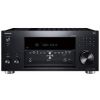
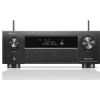

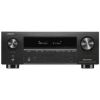
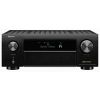

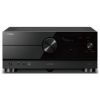


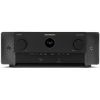
Latest receiver comparisons



